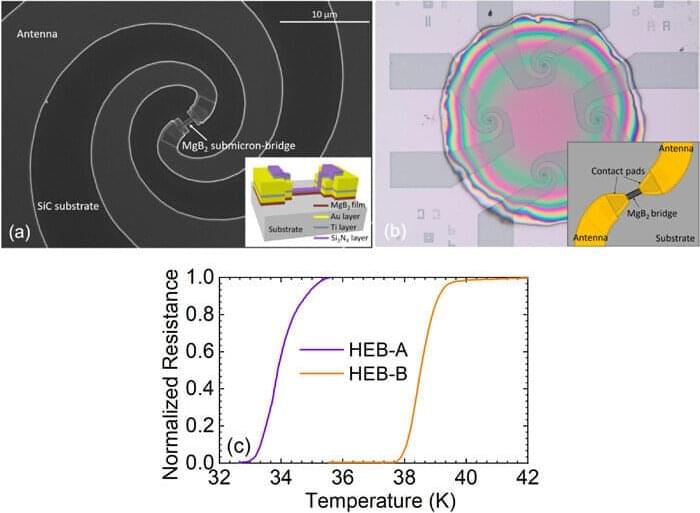To study how stars and planets are born we have to look at star cradles hidden in cool clouds of dust. Far-infrared telescopes are able to pierce through those clouds. Conventionally, niobium nitride bolometers are used as the detectors, despite their low operating temperature of 4 Kelvin (−269° Celsius).
Now Yuner Gan (SRON/RUG), together with a team of scientists at SRON, TU Delft, Chalmers University and RUG, has developed a new type of bolometer, made of magnesium diboride, with an operating temperature of 20 Kelvin or above. This can significantly reduce the cost, complexity, weight and volume of the space instruments.
Conventional, superconducting niobium nitride (NbN) hot electron bolometers (HEBs) are so far the most sensitive heterodyne detectors for high-resolution spectroscopy at far-infrared frequencies. Heterodyne detectors take advantage of a local oscillator to convert a terahertz line into a gigahertz line.
